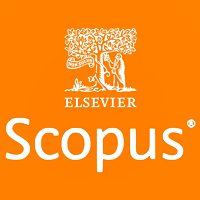
This article is an open access article distributed under the terms and conditions of the Creative Commons Attribution license (CC BY).
ORIGINAL RESEARCH
Revival of radioimmunoassay for determination of insulin autoantibodies
1 Russian Children's Clinical Hospital (RCCH) — Pirogov Russian National Research Medical University, Moscow, Russia
2 Shemyakin–Ovchinnikov Institute of Bioorganic Chemistry, Moscow, Russia
3 Russian University of Medicine of the Ministry of Health of the Russian Federation, Moscow, Russia
Correspondence should be addressed: Alexei V. Timofeev
Leninsky prospect, 117, bld. 2, Moscow, 119571, Russia; moc.liamg@mitlavla
Author contribution: Timofeev AV — study concept, analysis of the results, manuscript editing; Galimov RR — selection and preparation of serum samples, RIA; Kolesnikova EA — manuscript writing; Artyuhov AS — statistical processing of the RIA results; Skoblov YuS — labeling of insulin with radioactive iodine, measuring the sample radioactivity with a gamma counter; Taktarov SV — preparation of serum samples, RIA.
Compliance with ethical standards: the study was conducted in accordance with the principles of the Declaration of Helsinki (1964) and further amendments.
Insulin autoantibodies (IAA) represent the major serological marker of type 1 diabetes mellitus (T1D), the disease resulting from autoimmune damage to β-cells in the pancreatic islets. Testing for IAA is used in early and differential diagnosis of T1D, as well as to perform screening for this disorder. The best foreign diagnostic labs perform IAA tests using different radioimmunoassay (RIA) formats. The RIA performance characteristics, i. e. diagnostic sensitivity (DSe), diagnostic specificity (DSp), and diagnostic accuracy (DA), are on average equal to 44%, 100%, and 81%, respectively. Unfortunately, in Russia RIA has not been used to determine IAA for a long time. All Russian labs use the enzyme-linked immunoassay (ELISA)-based test systems for this purpose. DSe, DSp, and DA of ELISA systems are on average 24%, 87%, and 62%, respectively, i.e. considerably lower compared to RIA systems. Our study aimed to reproduce IAA RIA in the diagnostic lab of the RCCH. The method is based on IAA competitive binding to insulin and 125I-labeled insulin. Serum samples from patients with new onset T1D and patients without diabetes were tested for IAA. DSe, DSp, and DA were 43%, 100%, and 73%, respectively. Thus, performance characteristics of the reproduced IAA RIA are close to those of RIAs used in foreign labs and are significantly superior to the characteristics of ELISA-based tests.
Keywords: type 1 diabetes mellitus, insulin autoantibodies, radioimmunoassay, diagnostic sensitivity, diagnostic specificity, diagnostic accuracy
